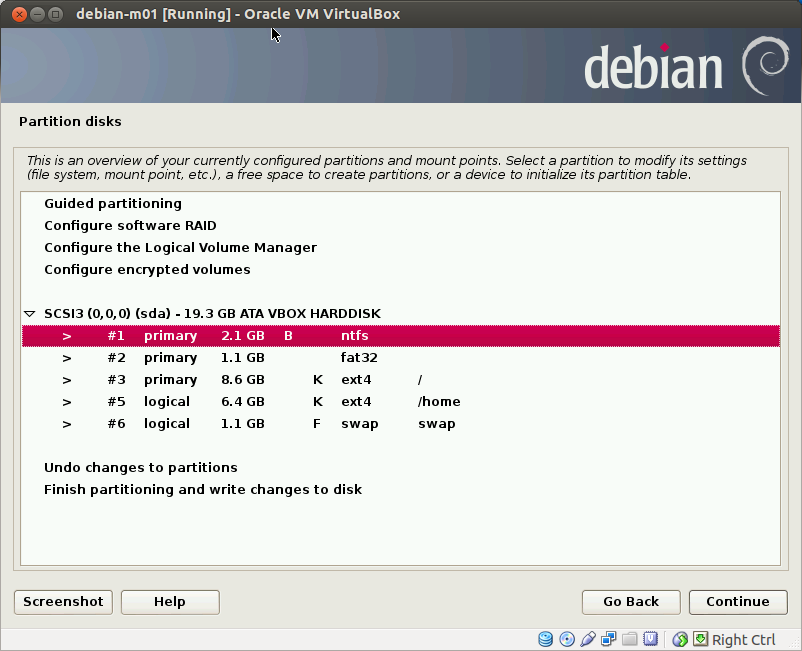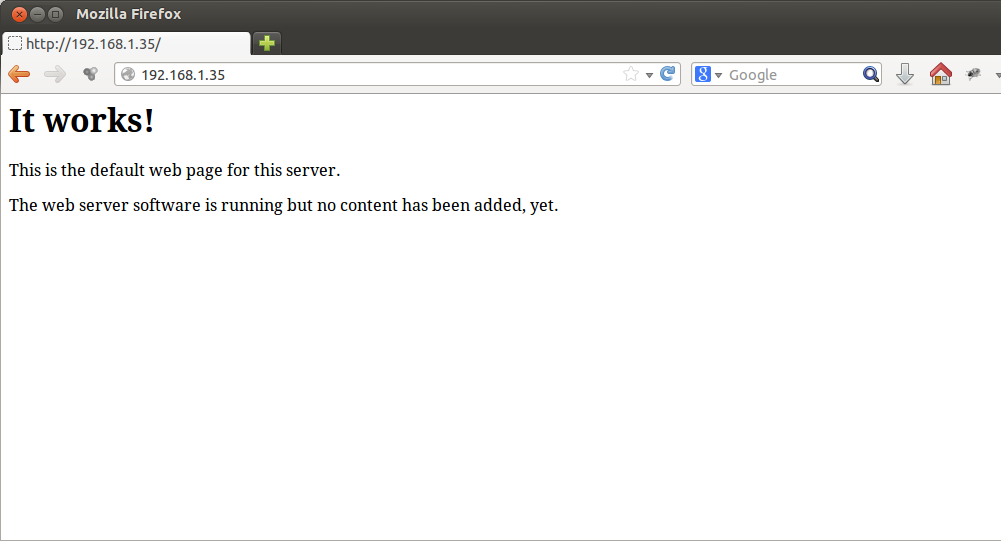GENERAL CONDITIONS
1- Deadline INF-B: On 8-11-13 your teacher will check that your operating system is working properly
Deadline INF-A: On 11-11-13 your teacher will check that your operating system is working properly
2- Make this report individually.
DOCUMENTATION
1- http://debian-handbook.info/browse/wheezy/sect.installation-steps.html
PRACTICAL EXERCISE: INSTALLING DEBIAN 7.2.0, STEP BY STEP
1- Download the installation image escarrega of Debian 7.2.0 from:
http://cdimage.debian.org/debian-cd/7.2.0/amd64/iso-cd/debian-7.2.0-amd64-netinst.iso (64bits version)
http://cdimage.debian.org/debian-cd/7.2.0/i386/iso-cd/debian-7.2.0-i386-netinst.iso (32 bits version)
2- Select your debian-m01 virtual machine. Check "Enable PAE/NX" in System --> Processor --> Externded Features.
3- Add your newly downloaded image file to the IDE Controller branch in Storage --> Storage Tree. Attach your image to the IDE Primary Master of your IDE controller.
4- Network configurationConfiguració de xarxa: a) Attached to: Bridge Adapter, b) Name: your WiFi network card, c) Adapter Type: Intel PRO/1000 MT Desktop (OEM 82540) , d) Promiscuos mode: Deny and e) Check "Cable Connected".
5- Boot your computer from the disc. Select "Graphical install".
6- Language: English.
7- Location: Other --> Europe --> Andorra or Spain.
8- Locales: United Kingdom or United States.
9- Keymap to use: Catalan or Spanish
10- Now, some additional components are loaded in your system. Afterwards, you will be required to provide a name for your host. Write debian-m01.
11- Now, you should write the Domain name to which your host belongs. Write fjeclot.net.
12- Write the following password for your root user: infm01
13- Now, write "Asix or Daw Student" as a "real" name for a new non-administrative user account. Remember, you are not wrtiing a username, you are writing the real name. A real name is for instance "John Smith".
14- Nom, you have to write a "username" for the new non-adminstrative account. Write: inf1. Remember, that is the name you have to write when you are logging in your system.
15- Choose and re-enter a password for the new non-adminstrative account. Write fjeclot.
16- Partition method: Manual.
17- Configure your existing partitions with the following mount points:

18- Now, the base system will be installed in your host. It takes a few minutes to complete this task.
19- Configuring the package manager: Choose Finland --> ftp.fi.debian.org. It's a server with a high speed connection to Internet.
20- HTTP proxy information: None. Do not write anything.
21- Now, your package manager will be configured. Afterwarfs, a firstgroup of software pacakges will be downloaded from the server and installed in your computer. It takes a few minutes to complete this task.
22- Answer No to the question made by the system in the window "Configuring popularity-conquest".
23- In "Software selection" select : a) Debian desktop environment, b) Web server, c) SSH server, d) Printer server and e) Standard system utilities. Now, the selected software will be downloaded and installed. It takes several minutes to complete this task. It depends on your internet connection speed. It depends on the features of your virtual machine as well. Take it easy!!!.
24- Answer Yes to the question "Install the GRUB boot loader to the master boot record?".
25- Now, the installation is complete. Reboot your system. Select the first option in the GRUB menu. Afterwards select your user and write your password and you will gain access to your desktop.
26- Open a terminal. Go to Applications --> Accessories --> Terminal. Gain access as a root user running the command:
su -
and writing the password for the root user.27- Check your IP address running ifconfig.
28- Run Firefox or any other web surfer in your host computer. Write the IP address of your debian computer in the navigation toolbar. Check the answer given by Debian to your request. For instance, if the Debian IP address were 192.168.1.35, you would see the following answer:

29- Finally, you can shutdown your computer. In the upper left square, select your user real name. A menu will appear. Select "Shutdown". A dialog box will appear in the middle of your desktop. Click on the button "Shutdown". Now, your system will be properly stopped.